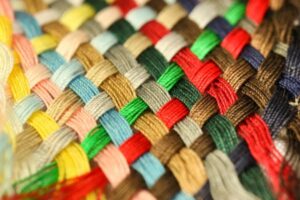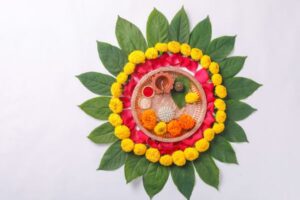Chinese paper cutting, or Jianzhi, is an ancient traditional art form that has captivated people for centuries. With its delicate designs, intricate details, and cultural symbolism, this art form holds a special place in Chinese culture. In this article, we will delve into the rich history, techniques, and cultural significance of Chinese paper cutting. From its origins in ancient times to its continued popularity in modern-day China and beyond, we will explore the enduring legacy of this remarkable art form.
1: Origins and History of Chinese Paper Cutting
1.1 Ancient Beginnings: The Origins of Paper Cutting in China
Chinese paper cutting has a history that can be traced back to the Han Dynasty (206 BCE – 220 CE). It emerged as a form of decorative folk art, using simple tools and techniques to create intricate designs. Paper cutting was initially used for religious and ceremonial purposes, and later evolved into a popular form of artistic expression and home decoration.
1.2 Cultural Significance: Superstitions, Festivals, and Folklore
Paper cutting in China holds deep cultural significance. It is often associated with superstitions and beliefs, such as warding off evil spirits and bringing good luck. Paper cuttings are prominently displayed during festivals like Chinese New Year and weddings, where they symbolize blessings, happiness, and a hopeful future. Additionally, paper cuttings often depict scenes from folklore and mythology, connecting people to their cultural heritage and storytelling traditions.
1.3 Regional Styles: Diversity in Technique and Design
Chinese paper cutting exhibits regional diversity, with various styles emerging from different parts of the country. Each region has its unique techniques, themes, and design elements. For example, the intricate style of Hebei paper cutting, the bold and vibrant designs of Shaanxi paper cutting, and the delicate precision of Jiangsu paper cutting all contribute to the rich tapestry of this art form.
2: Techniques and Tools of Chinese Paper Cutting
2.1 Single-Sheet Cutting: Precision and Intricacy
The most common technique in Chinese paper cutting is single-sheet cutting, where a design is created by cutting intricate patterns into a single sheet of paper. This technique requires precision and meticulousness, as the artist uses a small pair of scissors or a sharp knife to carefully cut out the desired shapes.
2.2 Layered Paper Cutting: Depth and Dimension
Layered paper cutting, also known as window paper cutting, involves stacking multiple sheets of paper and cutting designs into each layer to create depth and dimension. This technique allows for more intricate and elaborate designs, as the artist can showcase different elements of the composition through the different layers.
2.3 Stencil Cutting: Replicating Designs with Ease
Stencil cutting is a technique that involves creating a template of the desired design on a sturdy material such as cardboard or plastic. The template is then placed on top of a sheet of paper, and the artist uses a sharp knife or blade to cut along the lines of the stencil, creating an accurate replication of the design.
3: Symbolism and Themes in Chinese Paper Cutting
3.1 Auspicious Symbols: Bringing Good Fortune
Chinese paper cuttings often incorporate auspicious symbols and motifs that are believed to bring good fortune, prosperity, and happiness. These symbols can include representations of mythical creatures, flowers, birds, and other elements associated with luck and blessings.
3.2 Zodiac Animals: Celebrating the Lunar Calendar
The Chinese zodiac, based on a 12-year cycle, is a prominent theme in paper cutting. Each year is associated with a specific animal, and paper cuttings featuring these zodiac animals are often displayed during the corresponding lunar year. These designs not only celebrate the animal of the year but also reflect the characteristics and values associated with each animal.
3.3 Nature and Seasons: Depicting the Beauty of the Natural World
Chinese paper cutting often draws inspiration from nature and the changing seasons. Designs may include depictions of flowers, plants, animals, and landscapes, capturing the essence of the natural world and celebrating the beauty and harmony found in the environment.
4: Preservation and Revival of Chinese Paper Cutting
4.1 Cultural Heritage: Recognizing the Importance of Intangible Cultural Heritage
Chinese paper cutting has been recognized as an intangible cultural heritage by organizations such as UNESCO, emphasizing its cultural significance and the need for its preservation. Efforts are underway to document, promote, and teach this traditional art form, ensuring its continuation for future generations.
4.2 Contemporary Adaptations: From Traditional to Contemporary Art
Chinese paper cutting has also found its place in contemporary art and design. Artists are exploring new techniques, materials, and subject matters, blending traditional paper cutting with modern artistic expressions. These innovative approaches are expanding the boundaries of Chinese paper cutting and introducing it to new audiences worldwide.
4.3 Workshops and Cultural Centers: Preserving and Passing on the Craft
Various workshops, cultural centers, and educational institutions are dedicated to preserving and promoting the art of Chinese paper cutting. These establishments offer classes, exhibitions, and cultural events, providing opportunities for both artists and enthusiasts to learn, practice, and appreciate this ancient art form.
5: Chinese Paper Cutting in Festivals and Celebrations
5.1 Chinese New Year: Auspicious Decorations and Traditions
During Chinese New Year, paper cuttings play a prominent role in decorations and celebrations. Homes are adorned with intricate paper cuttings symbolizing good luck, wealth, and happiness. They are also displayed on windows and doors to ward off evil spirits and welcome the new year with positivity.
5.2 Spring Festival Couplets: Spreading Joy and Well-Wishes
Spring Festival couplets, also known as Chunlian, are a traditional form of paper cutting. These vertical strips of paper with poetic verses are hung on door frames as a way to express well-wishes and invite blessings for the upcoming year. The couplets are often adorned with auspicious paper cuttings that reflect the themes of prosperity, longevity, and harmony.
6: Regional Variations in Chinese Paper Cutting
6.1 Hebei Style: Elaborate Designs and Intricate Details
The Hebei style of Chinese paper cutting is known for its highly intricate designs and delicate details. It incorporates elements of traditional Chinese painting, with motifs inspired by nature, folklore, and historical tales. The Hebei style requires exceptional skill and patience due to its elaborate patterns and intricate cuttings.
6.2 Shanxi Style: Bold and Dynamic Designs
Originating from the Shanxi province, the Shanxi style of Chinese paper cutting is characterized by bold, dynamic designs. The cuttings often feature strong lines and geometric shapes, symbolizing strength, prosperity, and good fortune. The Shanxi style is particularly popular during festivals and celebrations.
7: Chinese Paper Cutting as a Contemporary Art Form
7.1 Paper Cutting in Modern Art Exhibitions: Pushing Boundaries
Chinese paper cutting has transcended its traditional boundaries and found its place in contemporary art exhibitions. Artists explore new techniques, incorporate different mediums, and experiment with abstract and conceptual designs. These modern interpretations of paper cutting challenge perceptions and expand the artistic possibilities of this ancient art form.
7.2 Paper Cutting in Fashion and Design: Fusion of Tradition and Modernity
Chinese paper cutting has also influenced the world of fashion and design. Fashion designers incorporate paper cutting elements and motifs into garments, accessories, and textile patterns, blending tradition with modern aesthetics. This fusion of tradition and modernity creates unique and captivating pieces that pay homage to Chinese heritage.
8: Tools and Materials Used in Chinese Paper Cutting
8.1 Scissors: Precision Cutting Tools
Traditional Chinese paper cutting often involves the use of special scissors designed specifically for this art form. These scissors have long, narrow blades with sharp points, allowing artists to make intricate cuts with ease. The craftsmanship and quality of the scissors greatly impact the precision and detail of the final paper cutting.
8.2 Rice Paper: Lightweight and Versatile
Rice paper, or Xuan paper, is the most commonly used material in Chinese paper cutting. It is known for its lightweight and flexible nature, making it ideal for intricate designs and delicate cuttings. The translucent quality of rice paper adds an ethereal beauty to the final artwork.
9: Symbolism and Cultural Significance of Chinese Paper Cutting
9.1 Double Happiness: Celebrating Love and Marriage
One of the most popular symbols in Chinese paper cutting is the “Double Happiness” character, which represents joy, harmony, and marital bliss. Paper cuttings featuring this symbol are often displayed at weddings and anniversaries to bestow blessings upon the couple and symbolize a happy union.
9.2 Peony: The Queen of Flowers
The peony holds a special place in Chinese culture and is frequently depicted in paper cuttings. Known as the “Queen of Flowers,” the peony symbolizes prosperity, honor, and beauty. Its elegant and vibrant blossoms are often used in paper cuttings to convey wishes for a flourishing and fulfilling life.
10: Chinese Paper Cutting in Modern Education and Preservation Efforts
10.1 Cultural Revival: Integrating Paper Cutting in Education
In recent years, there has been a renewed interest in preserving and promoting the art of Chinese paper cutting through educational initiatives. Schools and cultural organizations are incorporating paper cutting workshops and classes into their curriculum, introducing young learners to this traditional art form. By integrating paper cutting into education, efforts are made to ensure the preservation and transmission of this cultural heritage to future generations.
Conclusion
Chinese paper cutting is a cherished and significant art form that has played a prominent role in Chinese culture for centuries. It showcases the creativity, craftsmanship, and cultural symbolism deeply rooted in Chinese traditions. From its historical origins to its contemporary adaptations, Chinese paper cutting continues to captivate and inspire people worldwide. As we appreciate the intricate designs, precision techniques, and cultural significance of Chinese paper cutting, let us recognize its enduring value as a cultural treasure. May the art of Chinese paper cutting continue to thrive, evolve, and be cherished as an expression of artistic excellence and cultural heritage.



